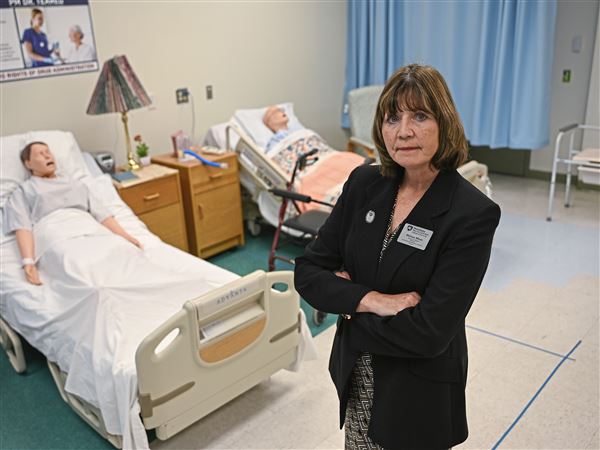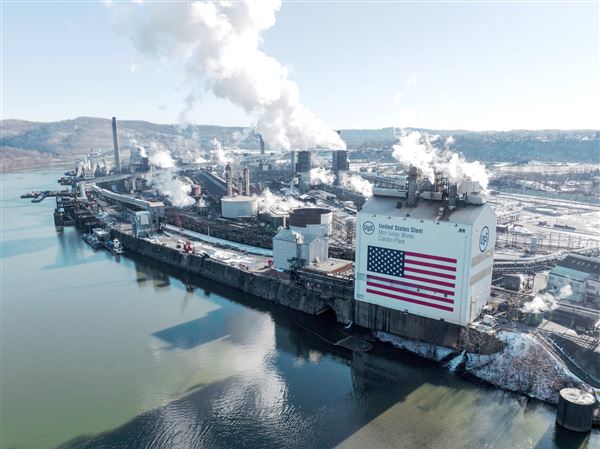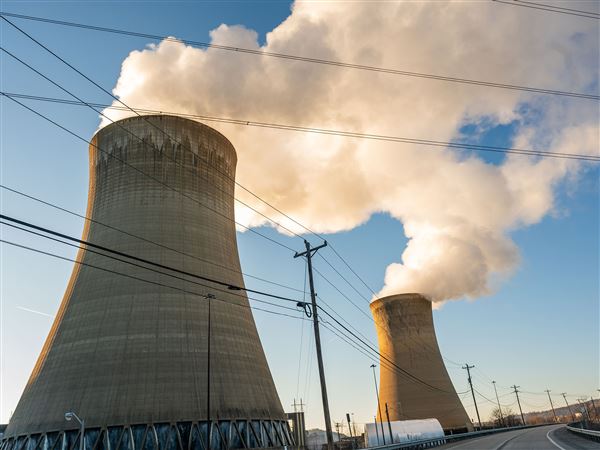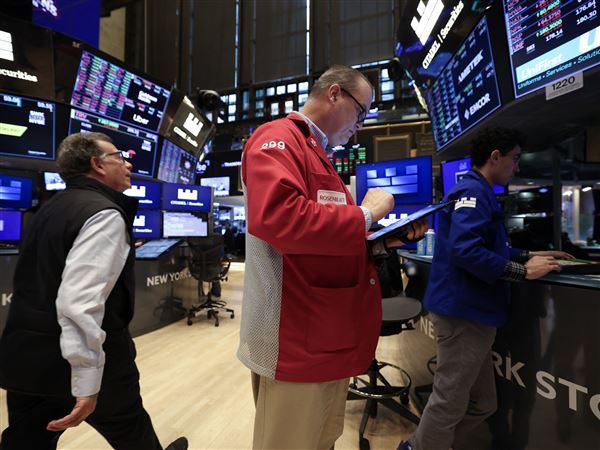How do you keep a terrorist from inserting a weapon such as a radiation-filled "dirty bomb" into one of the seven million-plus shipping containers that arrive at U.S. ports every year?
That question has dogged policy makers, customs agents and counterterrorism experts ever since the Sept. 11, 2001, attacks.
Until now, U.S. Customs and Border Protection has sought to secure global shipping by relying on intelligence and scrutinizing cargo manifests to identify and inspect suspicious shipments -- such as an unrefrigerated container full of "frozen fish" -- long before they reach American shores.
But critics say this method is flawed because it relies on the vague and often-unreliable information listed on shipping documents, as well as on spotty intelligence from remote corners of the world. Currently, less than 6 percent of the containers headed for American ports are deemed "high risk" by the U.S. Department of Homeland Security and get pulled for examination by Customs inspectors.
Now, a new strategy being tested in Hong Kong claims to better secure the global shipping system by electronically scrutinizing every container full of sneakers, without unacceptably slowing the flow of international commerce.
In the past year, the Hong Kong Terminal Operators Association, which includes several private companies that manage the world's second-busiest port after Singapore, has deployed scanning machines supplied by Science Applications International Corp. of San Diego. Trucks that haul the port's containers pass through two of the giant scanners. One checks for nuclear radiation, while the other uses gamma rays to seek out any dense, suspicious object made of steel or lead inside the containers that could shield a bomb from the nuclear detector.
At the offices of Modern Terminals in Kwai Chung, four flat-screen monitors depict the scanning operations. X-ray-like images of the passing containers pop up on the screens and are stored on a computer server. The tracking code on each container is also recorded. The computer files can be reviewed immediately by local officials or, conceivably, passed on so that customs agents in Rotterdam, New York or Los Angeles could use them to help identify suspicious cargo before it gets loaded onto a ship, or at any point along its journey. Such a database could prove invaluable if a container that had originated in Hong Kong later was involved in terrorism.
The aim is to ensure a greater level of security for the U.S. as it tries to manage containers coming from around the globe. And it might draw more business, too. Sean Kelly, the managing director of Modern Terminals, says they have taken on the pilot program because better security means more shippers will use their terminal -- and Hong Kong's port in general -- in the long term. They are, after all, seeing stiffer competition from Shenzhen and Shanghai ports.
Although U.S. Customs has programs in place to work closely with foreign ports, the security of oceangoing containers falls to the country of their origin. If the biggest ports joined the program, it might mean a more accurate system of global information exchange.
The Department of Homeland Security said this week it would work with Hong Kong's port authorities to continue to develop the screening project, which the DHS said holds the promise "to play a formidable role in blunting the terrorist threat." But the U.S. agency stopped short of saying whether it would consider such a system at U.S. ports.
The response came after Hong Kong Terminal Operators sent a letter July 21 to Homeland Security Secretary Michael Chertoff requesting feedback on the project in the hope that the U.S. would back it, justifying the $7 million they have spent so far. The project would most likely close in 90 days if the U.S. failed to give its support, Mr. Kelly says.
Stephen Flynn, a maritime-security expert and consultant to SAIC, which hopes to sell its machines to ports around the world, says the system promises to revolutionize port security. He says it is the best way to ensure that a container is carrying, say, shoes and not "a large black box that could go boom in the night."
In the event that a bomb got through in one container, Mr. Flynn says, U.S. officials could use the stored images and information to track a shipment back to its source. They could then selectively stop ships transporting other containers from the same source or whose scans had results similar to the one with the bomb. This could prevent the need to shut down international shipping, which would slam the global economy and sow panic -- presumably the aim of a terrorist group employing such a weapon.
So far, Mr. Flynn says, the Hong Kong project, if implemented, would cost shippers an additional $6.50 per container.
Still, many shipping-industry people in Hong Kong complain about the cost and hassle of the security clearance. But this system could potentially be a good deal because other security costs, such as paperwork, could be reduced.
To date, Hong Kong has stored more than 250,000 container scans, many for cargo that was shipped to U.S. ports. However, none have ever formally been requested by U.S. authorities. In fact, until Tuesday, Washington had shown little enthusiasm for the project, arguing that its efforts to beef up maritime surveillance and screening were sufficient.
In part, the lack of enthusiasm by the U.S. for the system reflects a difference in philosophy. The U.S. believes security can be maintained by checking only select containers that may be suspect, based on their shipping manifest and government intelligence. Moving to a system that scanned all incoming containers would represent a costly change in approach.
For the past year, U.S. Customs has worked within the World Customs Organization to increase port-security standards globally. Last month, the 166 customs agencies that make up the group agreed to bolster their standards. Among the new measures is one that lets any member state request inspections of containers at any other member state's ports.
The members also agreed to step up efforts to stop suspicious containers at the port of origin, to share information on outbound containers through an automated system and to smooth the inspection process to prevent unnecessarily hampering the flow of goods.
U.S. Customs already uses scanning technology at hundreds of American ports as well as many land border crossings. It also provides hand-held radiation scanners to officials at every major U.S. port. But these scans are used only on containers that have deemed by Customs as high risk. They are an alternative or precursor to physical inspections, and the scan images are never stored.
Billions of dollars have been spent buying, running and maintaining the myriad security methods available to U.S. Customs, says Al Gina, executive director of the Container Security Initiative at U.S. Customs and Border Protection.
Much of this money has gone into the agency's National Targeting Center in Reston, Virginia, where U.S. agents use a computer program known as ATS, or automated targeting system, to hunt for terrorists or weapons in the advance information provided under law by airlines and shipping agents. The system checks the information against government databases and looks for anomalies to determine what cargo or passengers are "high risk," whether they require scrutiny, or whether they should be barred from the U.S. entirely.
But the effectiveness of the systems has been called into question. During congressional testimony last year, the former Homeland Security inspector general, Clark Kent Ervin, said a preliminary examination of NTC's work in Fort Lauderdale, Florida, suggested that random inspections of ships were better at uncovering smuggling activities than ATS.
Customs officials disagree, saying that ATS has been a vital part of its security strategy and is crucial to programs like the Container Security Initiative, which is active at 35 international ports where U.S. Customs officers work with local counterparts to identify suspicious containers before they are sent to the U.S.
First Published: July 29, 2005, 4:00 a.m.














